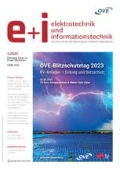Passive optical networks (PON) for fiber to the home/cabinet (FTTH/C) have become popular recently due the unstoppable bandwidth demand. Data rates downstream of up to 2.5 Gbps and upstream of up to 1.2 Gbps with splitting factors reaching 64 are in the focus of worldwide product developments. An attractive solution for next generation PON with splitting factors of more than 512, 10 Gbps downstream and 2.5 Gbps upstream data signals is outlined in this paper. The increased splitting factor compensates for the higher components costs due to the higher data rates. By adding optical amplifiers and wavelength division multiplexing (WDM) distances over 100 km and ring structures with more than three nodes are possible leading to a promising and cost-effective next generation "super"-PON thus making MAN (metro access networks) obsolete.
Passive optische Netze (PON), die für fiber to the home/cabinet (FTTH/C) Verwendung finden, werden aufgrund der wachsenden Bandbreitennachfrage immer populärer. Downstream-Datenraten bis zu 2,5 Gbps, Upstream-Datenraten bis zu 1,2 Gbit/s mit Teilerfaktoren bis zu 64 sind Eckdaten der gegenwärtigen Produktentwicklung. In dieser Veröffentlichung wird eine attraktive Lösung für ein "next Generation PON" mit Teilerfaktoren von mehr als 512 sowie Datenraten von 10 Gbit/s Downstream und 2,5 Gbit/s Upstream-Datenraten präsentiert. Der vergrößerte Teilerfaktor, der Zugang für mehr Haushalte ermöglicht, kompensiert die durch die höheren Datenraten hervorgerufenen Kostensteigerungen. Durch die Verwendung von optischen Verstärkern können Entfernungen bis zu 100 km überbruückt werden, gleichzeitig wird durch wavelength division multiplexing (WDM) das Konzept einer Ringstruktur mit mehr als drei Knoten vorgestellt. Damit erhält man ein kosteneffektives next generation "Super"-PON, das MAN (metro access networks) obsolet machen kann.
Similar content being viewed by others
References
IEEE Standard 802.3ah: Media Access Control Parameters, Physical Layers, and Management Parameters for Subscriber Access Networks, 2004.
ITU-T Recommendation G.984: Gigabit-capable Passive Optical Networks (GPON), 2003–2004.
ITU-T Recommendation G.983: Broadband optical access systems based on Passive Optical Networks (PON), 1998–2003.
Wanyi Gu, et al. (2002): Metro and Access Networks. SPIE Society of Photo-Optical Instrumentation.
Author information
Authors and Affiliations
Rights and permissions
About this article
Cite this article
Gianordoli, S., Rasztovits-Wiech, M., Stadler, A. et al. Next generation PON. Elektrotech. Inftech. 123, 78–82 (2006). https://doi.org/10.1007/s00502-006-0320
Issue Date:
DOI: https://doi.org/10.1007/s00502-006-0320


